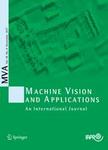版权所有:内蒙古大学图书馆 技术提供:维普资讯• 智图
内蒙古自治区呼和浩特市赛罕区大学西街235号 邮编: 010021

作者机构:Leiden Univ Imaging & BioInformat LIACS Niels Bohrweg 1 NL-2333 CA Leiden Netherlands
出 版 物:《MACHINE VISION AND APPLICATIONS》 (计算机视觉与应用)
年 卷 期:2018年第29卷第8期
页 面:1211-1225页
核心收录:
学科分类:0808[工学-电气工程] 08[工学] 0812[工学-计算机科学与技术(可授工学、理学学位)]
基 金:China Scholarship Council (CSC) Netherlands Organisation for Scientific Research (NWO)
主 题:Zebrafish segmentation Bright-field microscope Hybrid method Mean shift algorithm Level set method High-throughput imaging
摘 要:Accurate segmentation of zebrafish from bright-field microscope images is crucial to many applications in the life sciences. Early zebrafish stages are used, and in these stages the zebrafish is partially transparent. This transparency leads to edge ambiguity as is typically seen in the larval stages. Therefore, segmentation of zebrafish objects from images is a challenging task in computational bio-imaging. Popular computational methods fail to segment the relevant edges, which subsequently results in inaccurate measurements and evaluations. Here we present a hybrid method to accomplish accurate and efficient segmentation of zebrafish specimens from bright-field microscope images. We employ the mean shift algorithm to augment the colour representation in the images. This improves the discrimination of the specimen to the background and provides a segmentation candidate retaining the overall shape of the zebrafish. A distance-regularised level set function is initialised from this segmentation candidate and fed to an improved level set method, such that we can obtain another segmentation candidate which preserves the explicit contour of the object. The two candidates are fused using heuristics, and the hybrid result is refined to represent the contour of the zebrafish specimen. We have applied the proposed method on two typical datasets. From experiments, we conclude that the proposed hybrid method improves both efficiency and accuracy of the segmentation of the zebrafish specimen. The results are going to be used for high-throughput applications with zebrafish.